- Home
- Barbara W. Tuchman
Bible and Sword: England and Palestine From the Bronze Age to Balfour Page 3
Bible and Sword: England and Palestine From the Bronze Age to Balfour Read online
Page 3
But it calls to mind another curious coincidence. Again a general from Britain, in this case the Emperor’s legate, Julius Sextus Severus, had to be called to Palestine before Bar Cochba’s furious and fanatic revolt could be quelled. And, like Titus two generations earlier, he brought a fearful punishment upon the Jews. Thenceforward they were forbidden to enter Jerusalem, and all but a remnant were exiled from Palestine.
Despite all these coincidences the historian must come away empty-handed from the search for evidence of actual contact between the two peoples at that time. And from then on their fates diverged. The Jews lost their country, but somehow retained their sense of nationality in exile. The Celts of Britain remained in their country, but lost their nationality under a succession of alien conquerors.
*Still the idea persists. In 1924 a book of some scientific pretensions called The Phoenician Origin of Britons, Scots and Anglo-Saxons was published by Laurence Waddell. Arguing from the evidence of stone artifacts, the author builds up a good case; but it bothers him that the Phoenicians were Semitic, and he destroys his own claim to be taken seriously by insisting that they were Aryan and that existing pictures of them require “some slight nasal readjustment to the Aryan type.”
CHAPTER II
APOSTLE TO THE BRITONS:
Joseph of Arimathea
The search for national origins was duplicated in the search for religious origins. National pride demanded for the British church a personified founder, sought him directly in Palestine, and found him in the person of Joseph of Arimathea. Joseph was the rich Jew and secret disciple who sat silent when the Sanhedrin, of which he was a member, voted to hand Jesus over to the civilian arm of Pilate. Later Joseph came forward publicly to claim Jesus’ body and give it burial. He was the first person of wealth and influence to join the new sect and was no doubt regarded as a “traitor to his class,” for the Galilean gospel was not addressed to the rich and wellborn.
His legend centers in the Abbey of Glastonbury, the oldest in England, which he is credited with having founded. In one of Tennyson’s Idylls of the King a monk speaks:
“From our old books I know
That Joseph came of old to Glastonbury
And there the heathen prince, Arviragus,
Gave him an isle of marsh whereon to build
A little lonely church in days of yore.”
Tennyson of course took Joseph from Malory’s Morte d’Arthur. In that account Joseph, “by fortune come unto thys lande that at that time was called Grete Bretayne,” was able to “disheryt” a “grete felon paynim” who ruled the country, and “after that all the people withturned to the Crystyn feythe.”
Malory’s work, however, was not the beginning but the end product of centuries of half history, half legend that, with each successive chronicler, increased by what it fed on. By the time medieval chroniclers and romance poets had done with him Joseph emerged not only as the author of Celtic Britain’s conversion to Christianity and as bringer of the Grail, but also as the ancestor of Britain’s greatest national hero, King Arthur, and the link in some mysterious fashion between Arthur and Israel’s national hero, King David.
Why did English tradition settle on the figure of Joseph rather than any other? Perhaps the answer is that he actually did make his way from Palestine to Britain. Other apostles voyaged far from Judaea to carry the gospel, and the Roman ways to Britain were open. At any rate no one can say positively that he did not: one cannot prove a negative, especially when records of the time are so meager. Joseph at least had one important qualification: he was an actor in the events that gave birth to Christianity. From among the Twelve Apostles Rome had chosen Peter, Spain had James, France had Philip, nor could British national pride be satisfied with anyone less immediate to the original scene.
Who first carried Christianity to Britain we do not know, nor are we ever likely to know. In cold fact it probably infiltrated among the inhabitants via the agency of converted Romans, following the pattern that was being played out in other parts of the Roman world. Within two hundred years after the death of Jesus contemporary writers were referring to Christian communities in Britain. By 314 A.D. the Celtic Church in Britain was sufficiently well established to send three bishops as delegates to the Council of Arles. But its shadowy and anonymous beginnings did not satisfy the later church. An ancestor of heroic and antique mold was demanded, and gradually the figure of Joseph came to be accepted as the original apostle to the Britons.
Historical evidence he cannot claim. After a minute survey of all the surviving evidence the indisputable Bishop Stubbs concluded that any reference to apostolic preaching in Britain during the first century A.D. must “rest on guess, mistake or fable.” Joseph of Arimathea was the fable agreed upon.
It took such hold that by the end of the Middle Ages Joseph had become officially recognized as the founder of the British church. One can put one’s finger on the very moment when it happened. In the year 1431 at the Council of Basle, precedence in seating and other sensitive matters of protocol were determined by the antiquity of the churches of the respective countries. The English cited Joseph as establishing their claim for precedence. In a furious quarrel with the Spanish delegates, carried on for days in resounding Latin rhetoric, the English insisted that Joseph had arrived in Britain before James in Spain, that everyone knew James in fact had been killed before he ever got to Spain, that Glastonbury provided tangible evidence of Joseph’s presence in England, and that, regardless of how small a corner of the country he had converted, it was not the quantity but the antiquity of the conversion that was at issue. To buttress their claim the Bishops of London and Rochester who headed the English delegation drew up a memorial stating:
“… it is certain that in England, as may be ascertained from very ancient books and archives, in particular the archives of the notable abbey of Glastonbury in the diocese of Bath, that Joseph of Arimathea, with twelve companions, was carried to England, escaping either from the persecution of Herod or from that of Roman high officials in Judaea. In that place (England) he preached what he had seen and heard of Christ; and so preaching he converted numberless English people. And from them he acquired many and countless things which were brought to him by those converted to the faith. These things he later left to a church of Christ erected by him at the time when Peter was preaching the faith at Antioch. The church built by Joseph became afterward the seat of a monastery with the rank of abbey, and that noteworthy abbey and monastery has been preserved, praise to Christ Himself, to this day.”
In this memorial we have stumbled on that crucial point at which fable is converted into history.
The mainspring of the development of the Joseph legend lay in the ever-present British jealousy of Rome; in the urge to claim for the church in Britain an antiquity antedating that of Rome. In the person of Joseph England’s desire to by-pass Rome and to trace the sources of its faith directly to the primary source in the Holy Land could be satisfied. Immediately after the Norman conquest the theory of a personal apostle to the Britons, a witness of, indeed an actor in, the drama of the crucifixion and resurrection, coming direct from Palestine to bring the word, first appears. Now everything Saxon was in its turn contemned by the Norman conquerors, while Celtic culture enjoyed a revival. The Arthurian cycle bursts into full bloom, transmuting the great champion of Celtic Britain and the knights of the Round Table into heroes of the age of chivalry. With it is entwined the legend of the quest for the Holy Grail, and into the leading role steps the onetime member of the Sanhedrin of Jerusalem, Joseph of Arimathea.
As chroniclers and poets from the twelfth to the fifteenth century borrowed, added, and embroidered upon one another’s versions, the legend grew in dignity and detail, acquiring tangible evidence along the way, until the whole curious tangle of Gospel, Apocrypha, Celtic folklore, and French romance became an ineradicable part of the national tradition. By 1464 John Hardyng’s verse chronicle of Britain’s past includes as a matter of fac
t the statement that “Joseph of Arimathie came unto Britayne with Vespasyan and christened a part of this lande.”
During those three centuries the pure conversion legend became ever more hopelessly entangled in the lore of the Grail, for which the Crusades supplied much of the material. In England the Grail legend was mixed with the Celtic lore of Arthur and his knights and fashioned into pseudo-history by a long succession of chroniclers. Its richest development was in the work of Walter Map, whose Quete du Saint Graal, Joseph d’Arimathie, and Merlin were written about 1170. His romance of Joseph and the Grail was commissioned, scholars believe, by Henry II, who gave the tale a deliberate push for political reasons. To buttress his claim to head a national church coeval with Rome King Henry seized on the double Joseph-Grail legend, which Map accordingly popularized. Meanwhile the glory and honor of Glastonbury was further enhanced when Henry, with impressive ceremony, caused its churchyard to be dug up and found there, or so he claimed, the true tombs of Arthur and Guinevere. Glastonbury was thus officially confirmed as the burial site of ancient Britain’s hero King. Henry’s deliberate purpose was to raise Glastonbury above Canterbury, which had uncomfortable memories for him as the scene of Becket’s murder and was becoming all too popular as the goal of pilgrimages to Becket’s grave.
Joseph’s stature now grew rapidly. Not only did he and his descendants figure as keepers of the Grail, but he also came to be considered the ancestor of King Arthur himself. In the later accounts, which, after the fashion of medieval chroniclers, pretend to be true histories, divine intervention directs Joseph to the land of Britain, which is “promised to him and his issue.” There he fathers a line, traced down through many “begats” to a lady upon whom Uther Pendragon begat Arthur, “from which it is patent that King Arthur is descended from the stock of Joseph.” So says the writer known as John of Glastonbury, who lived about 1400.
Various precious national symbols gradually collect around and attach themselves to the figure of Joseph; not only the Grail, but also the sacred sword that gave Arthur kingship. This sword was originally King David’s, “the most marvelous that ever forged was,” which is taken out of the Temple and given to Solomon, who sets it to sea in a miraculous ship to find its destined owner, a pure knight “that shalt be the end of my lineage.” This person is of course Galahad, who through the alchemy of legend becomes the descendant of both Solomon and Joseph. He also inherits the miraculous white shield with the cross of blood brought from Syria by Joseph. In Malory’s Morte d’Arthur Joseph on his deathbed bequeathes the shield to Galahad, yet unborn by some 500 years, whom he too calls “the last of my lineage.”
David’s sword and Solomon’s ship are late additions to the legend, dating from fifteenth-century versions. Down the centuries Arthur and his knights had grown in verisimilitude and now appeared in all the chronicles as historical figures who fought Britain’s early battles against the Saxon invaders. Perhaps it was inevitable that men should wish to associate them with the Biblical heroes who represented the kingly power of Israel at its height. Or is this association another thread in the skein that carries so many Celtic traditions back to a source in Palestine?
Other Hebraic elements make their appearance. Joseph becomes confused with his Old Testament namesake, Joseph the son of Jacob. In a tremendous fifteenth-century poem by one Henry Lonelich that fills some eight hundred pages, Joseph, upon his arrival in Britain, finds it ruled by a “great felon paynim” called Duke Gaanor and peopled by “Saracens and many other miscreants.” This is obviously a medieval version of Pharoah and the Egyptians. Like Pharoah, the Duke has a vision, which his “Saracen” clerks cannot interpret, and Joseph is called upon to give his interpretation, which the Duke acknowledges as the true one. Then, like Nebuchadnezzar when his dream was read by Daniel, he professes himself ready to worship Joseph’s God instead of his own and is promptly converted to Christianity.
Another Hebrew symbol appears in the Fisher King, that key figure in all the Joseph-Grain stories, who becomes guardian of the Grail after Joseph dies and survives until Galahad appears. In some versions the Fisher King first appears as King Evalak, a Syrian champion who accompanies Joseph during his wanderings in the East and becomes his first convert. The title Fisher King derives from his having been directed by God to catch a fish, which provides himself and Joseph with sustenance in the wilderness. Like the Leviathan of Jewish tradition that is to provide food for the righteous at the Messiah’s coming, and like Leviathan in the Psalms, which God gave “to be meat to the people inhabiting the wilderness,” this fish could be partaken of only by the righteous. The Grail itself as a life-giving talisman whose finding restores a waste land to fruitfulness can be found in any number of religious cults. Sometimes it is a dish or cup. Sometimes, as in the Parzival of Wolfram von Eschenbach, it is a sacred stone, existing since the Creation. As a stone it has been connected by scholars with Isaiah’s “precious corner stone of pure foundation,” the stone at the center of the world, the stone that was Jacob’s pillow, the cornerstone of the Temple of Solomon. Celtic legend adopts this motif too, for the Stone of Scone, which figures in the crowning of British kings, was believed to have been originally Jacob’s pillow brought to Ireland by some forgotten migration of the tribe of Jacob, and thence to Scotland, from where the English conquerors stole it. This is the same stone that made a dramatic reappearance in 1951 when Scottish nationalists hauled it home by automobile.
To construct a theory of Celtic-Jewish connections on the treacherous swamps of the Joseph-Grail legend would be foolhardy indeed. No sooner does the venturesome inquirer put one toe into this quicksand than he is sucked into a morass of romance and folklore, comparative religions, troubadours and minnesingers, pagan and Christian mysteries, oriental and Celtic mythologies where rival scholars struggle hopelessly in a mire of myths and texts. The very subject produces an atmosphere that once to breathe is fatal to clarity, as the deliberate obscurities of T. S. Eliot’s The Waste Land, the reductio ad absurdum of the Grail legend, are proof enough.
But Joseph as apostle to the Britons remained firmly fixed in English tradition for centuries after the Middle Ages. John Leland the sixteenth-century antiquary, assumed the truth of Joseph’s apostleship in Britain. So did Sir William Dugdale, whose Monasticon Anglicanum, a further inquiry into England’s past through the study of old monastery records, appeared about a century later in 1655. At this time the episcopal controversy that rocked England during the tyrannical regime of Archbishop Laud inspired a theologian’s plunge into the dim past to clarify the circumstances of English church origins. One of these studies, the Ecclesiastical Historie of Great Britaine, by Richard Broughton, has a chapter entitled: “Wherein is proved by all kinds of testimonies and authorities, that for certaine, St. Joseph of Aramathia and divers other holy Associates came to, preached, lyved, dyed and was buryed in Britayne, at the place now called Glastonbury in Summersetshire.”
If Broughton was credulous, his contemporary, worthy Tom Fuller, the divine who held his own between Royalists and Puritans and wrote some of the most readable prose of the seventeenth century, was a natural skeptic. Yet in his Church History of Britain (1635) he cannot bring himself to deny the substance of the Joseph story, though he admits that “the leaven of monkery hath much swollen and puffed up the circumstance thereof.” Acknowledging the lack of verifiable material on the first century, Fuller adds what might be a precept to many less honest historians: “But as I find little so I will feign nothing; the time being better spent in silence than in lying.”
Clearly by this time, no matter what evidence pro or con might be added, no one could pry Joseph out of the British tradition. It may even be that he rightfully belongs there, for, as so often happens when modern science goes to work on the stuff of legend, the available facts tend to confirm the legend. Archaeological findings have in fact confirmed the existence of a Stone Age lake village at Glastonbury. It is pictured by the archaeologist Jacquetta Hawkes in terms that fit
exactly the story of Joseph and his wattled church in the marsh. “For the security which the times demanded, the founders of the village chose a piece of marshy ground … hacked down the growth of alder and willow which cumbered the site and then, with immense labor went on to build up an artificial island on the ground they had cleared.… On it stood some sixty round huts with wattled sides, trodden clay floors and roofs thatched with reeds.… Inside its protecting wall the village itself is full of life and activity—a compact stronghold of humanity isolated among the swamps.”
Perhaps its isolation and protected position accounted for the preservation of Glastonbury’s antique traditions. Then at some unknown date a fire apparently destroyed the original community, but in so doing baked hard the clay covering the wattle work and thus made possible its survival. Uncovered after two thousand years, it still carried the impress of the woven reeds or wicker. Examples of stonework typical of the kind found in Syria were also dug up around Glastonbury, suggesting some connection with Joseph’s homeland.
As Professor Freeman, an authority on ancient Britain, has said: “We need not believe that the Glastonbury legends are facts but the existence of those legends is a great fact.”
CHAPTER III

 Practicing History: Selected Essays
Practicing History: Selected Essays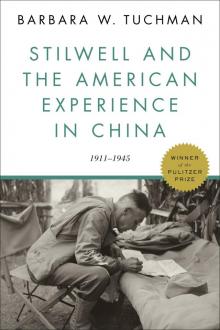 Stilwell and the American Experience in China, 1911-45
Stilwell and the American Experience in China, 1911-45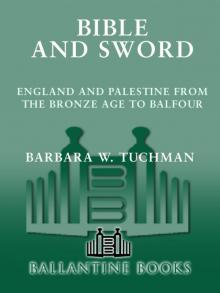 Bible and Sword: England and Palestine From the Bronze Age to Balfour
Bible and Sword: England and Palestine From the Bronze Age to Balfour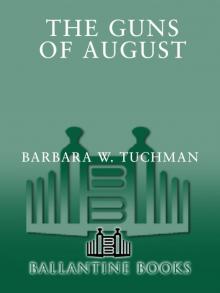 The Guns of August
The Guns of August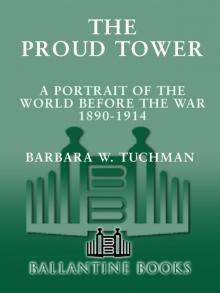 The Proud Tower: A Portrait of the World Before the War, 1890-1914
The Proud Tower: A Portrait of the World Before the War, 1890-1914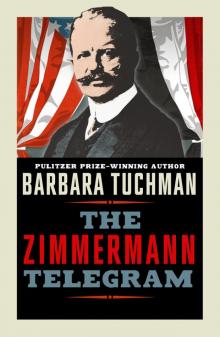 The Zimmermann Telegram
The Zimmermann Telegram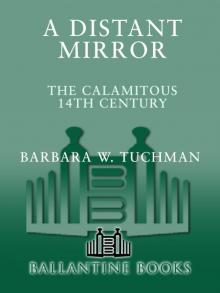 A Distant Mirror: The Calamitous 14th Century
A Distant Mirror: The Calamitous 14th Century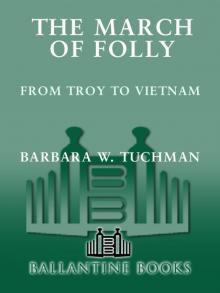 The March of Folly: From Troy to Vietnam
The March of Folly: From Troy to Vietnam The First Salute
The First Salute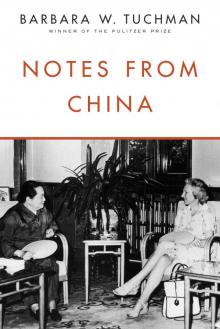 Notes From China
Notes From China Practicing History
Practicing History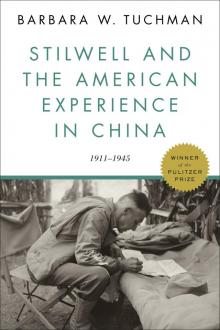 Stilwell and the American Experience in China
Stilwell and the American Experience in China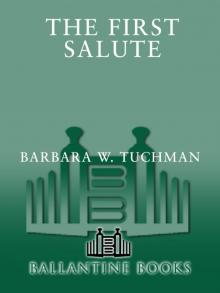 First Salute
First Salute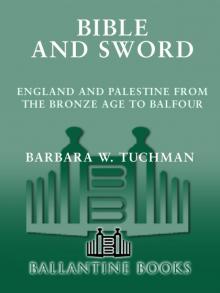 Bible and Sword
Bible and Sword